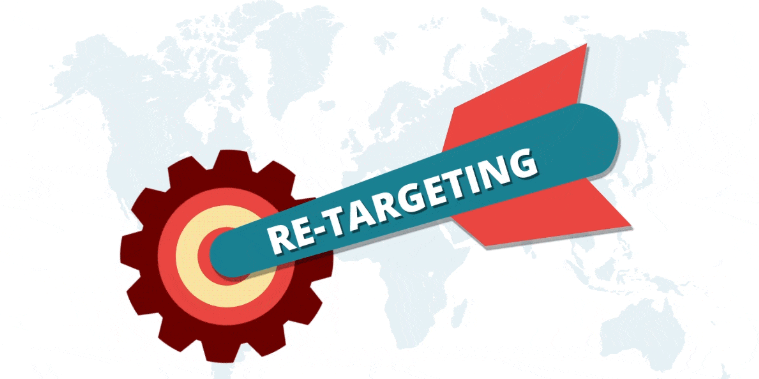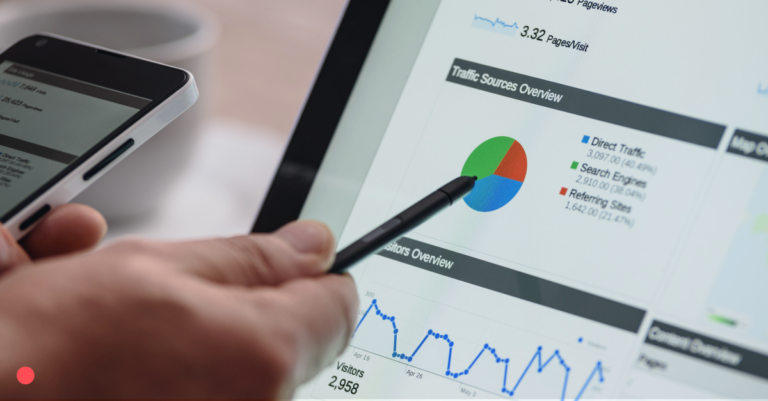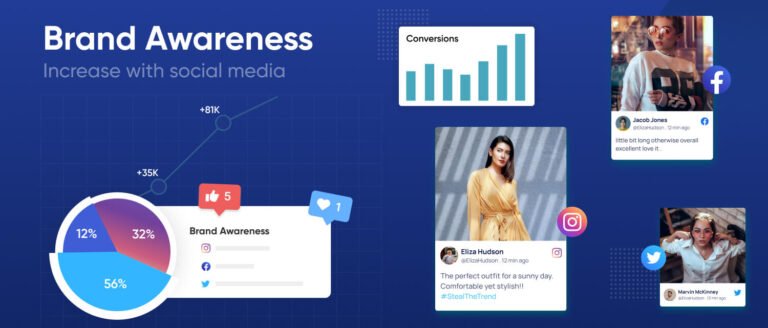10 Benefits of Using Ads on Social Media to Promote Businesses
In today’s fast-paced digital world, social media has become an essential part of our daily lives. With billions of active users across various platforms like Facebook, Instagram, Twitter, and LinkedIn, businesses have a golden opportunity to reach and engage with potential customers.
However, merely having a presence on social media isn’t enough. To truly leverage the power of these platforms, businesses must utilize social media advertising. In this article, we’ll explore the top 10 benefits of using ads on social media to promote businesses and how they can significantly enhance your marketing efforts.
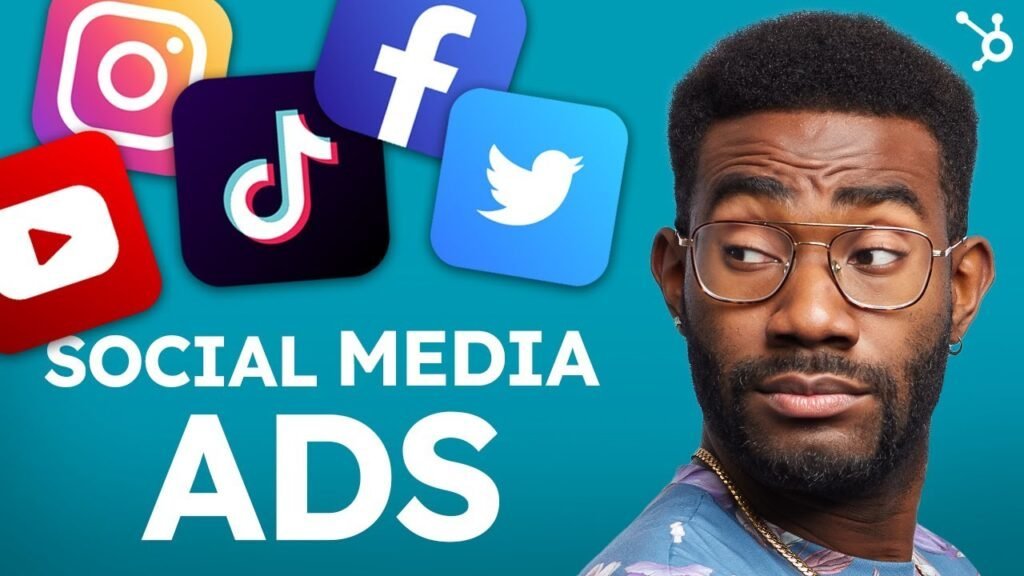
Key Benefits of Using Ads on Social Media to Promote Businesses
- Increased Brand Awareness: Social media ads boost brand visibility through broad reach, advanced targeting, eye-catching visuals, consistent presence, engagement, and influencer collaborations.
- Targeted Advertising: Advanced targeting options allow businesses to reach specific demographics, interests, behaviors, and locations, ensuring ads are seen by the most relevant audience.
- Cost-Effective Marketing: Social media advertising is more affordable than traditional methods, allowing businesses to set budgets, pay-per-click, and measure performance in real-time for optimal ROI.
- Improved Customer Engagement: Social media ads foster direct communication, gather valuable feedback, and build a sense of community around the brand.
- Higher Conversion Rates: By targeting the right audience and creating compelling ad content, social media ads increase click-through rates, drive sales, and facilitate retargeting.
- Better ROI: Social media ads offer higher ROI by enabling real-time performance tracking, campaign optimization, and clear measurement of ad spend impact.
- Enhanced Customer Insights: Ad campaigns provide valuable data on customer behavior and preferences, helping businesses refine marketing strategies and improve products.
- Competitive Advantage: Utilizing social media ads gives businesses a competitive edge by staying ahead of trends, differentiating their brand, and reaching customers before competitors.
- Access to a Wider Audience: Social media ads allow businesses to expand their reach to new markets, achieve global exposure, and cater to diverse demographics with tailored messaging.
- Flexibility in Campaigns: Social media advertising offers real-time adjustments, A/B testing, and rapid response to trends, ensuring continuous optimization and effectiveness.
Leveraging these benefits, businesses can significantly enhance their marketing efforts, reach a broader audience, and achieve higher engagement and ROI through social media advertising. Here’s a more detailed guide on these benefits and how to effectively implement social media ads in your marketing strategy.
1. Increased Brand Awareness
Social media ads are a powerful tool for boosting brand visibility and recognition. Here’s how they make a difference:
1. Broad Reach
Social media platforms like Facebook, Instagram, Twitter, and LinkedIn have billions of active users. By utilizing social media ads, businesses can reach a vast and diverse audience. Unlike traditional advertising, which often has a limited reach, social media ads can be seen by users across the globe, giving businesses the opportunity to expand their brand awareness exponentially.
2. Advanced Targeting
One of the standout features of social media advertising is its advanced targeting capabilities. Businesses can create highly specific audience segments based on demographics, interests, behaviors, and even geographic locations. This precision ensures that the ads are seen by the most relevant audience, increasing the likelihood of engagement and brand recognition.
3. Visual Appeal
Social media platforms are highly visual, and ads on these platforms can include eye-catching images, videos, and graphics. This visual appeal helps create a memorable impression on the audience, making the brand more recognizable. Engaging visuals are more likely to be shared, further amplifying brand visibility.
4. Consistent Presence
Regularly appearing in a user’s feed helps to keep the brand at the forefront of their mind. Social media ads allow for consistent exposure, reminding users of the brand and what it stands for. This repeated exposure builds familiarity and trust over time, making the brand more recognizable and top-of-mind for potential customers.
5. Engagement and Interaction
Social media ads are not just about visibility; they also encourage interaction. Users can like, comment, share, and even click through to learn more about the brand. This interaction creates a more personal connection with the audience, enhancing brand recognition and loyalty. The more users engage with the ad, the more it gets noticed by others, further boosting brand visibility.
6. Influencer Collaborations
Collaborating with influencers through social media ads can significantly boost brand awareness. Influencers have established followings that trust their recommendations. When they promote a brand through sponsored ads, their followers are more likely to take notice and engage with the brand. This can lead to a substantial increase in brand visibility and recognition, especially among niche audiences that are hard to reach through traditional advertising methods.
Social media ads offer an unparalleled opportunity for businesses to increase brand awareness. Through broad reach, advanced targeting, visual appeal, consistent presence, engagement, and influencer collaborations, businesses can significantly enhance their visibility and recognition in the market.
2. Targeted Advertising
Social media platforms offer precise audience targeting capabilities that provide several benefits:
1. Enhanced Relevance
Ads can be tailored to specific demographics, interests, behaviors, and locations, ensuring they reach the most relevant audience.
2. Increased Engagement
By targeting users who are more likely to be interested in the product or service, businesses see higher engagement rates, including likes, shares, and comments.
3. Better Conversion Rates
Precise targeting leads to higher conversion rates as ads are shown to users who are more likely to make a purchase or take the desired action.
4. Cost Efficiency
Targeting reduces ad spend waste by focusing only on potential customers, ensuring that marketing budgets are used effectively.
5. Detailed Analytics
Businesses gain insights into which segments respond best to their ads, allowing for continuous optimization and improved future campaigns.
In essence, social media’s advanced targeting capabilities ensure that ads are seen by the right people, maximizing impact and efficiency.
3. Cost-Effective Marketing
Social media advertising is a budget-friendly alternative to traditional marketing methods, offering several key advantages:
1. Lower Entry Costs
Setting up a social media ad campaign is generally more affordable than traditional advertising channels like TV, radio, or print. This makes it accessible to businesses of all sizes.
2. Pay-Per-Click (PPC) Model
With PPC, businesses only pay when someone clicks on their ad. This ensures that the ad spend is directly tied to measurable actions, maximizing the return on investment.
3. Flexible Budgeting
Businesses can set daily or lifetime budgets for their campaigns, allowing for precise control over ad spend. Campaigns can be scaled up or down based on performance and budget availability.
4. High ROI
The precise targeting and analytics provided by social media platforms ensure that ads reach the most relevant audiences, leading to better engagement and higher conversion rates. This targeted approach typically results in a higher ROI compared to traditional methods.
5. Real-Time Adjustments
Social media advertising allows for real-time adjustments to campaigns. If an ad isn’t performing well, it can be modified or paused, ensuring that budgets are spent effectively.
Social media advertising is a cost-effective marketing strategy that provides flexibility, precise targeting, and a higher ROI, making it a superior option compared to traditional advertising methods.
4. Improved Customer Engagement
Social media ads significantly enhance customer interaction and engagement in several ways:
1. Direct Interaction
Social media platforms allow businesses to engage with customers directly through comments, likes, and shares. This fosters a sense of community and makes customers feel valued.
2. Interactive Content
Ads can include polls, quizzes, and interactive videos, encouraging users to participate and engage with the brand actively.
3. Real-Time Responses
Businesses can respond to customer queries and feedback in real time, improving customer satisfaction and building trust.
4. Personalized Messaging
Targeted ads can deliver personalized content based on user preferences and behavior, making interactions more relevant and engaging.
5. User-Generated Content
Encouraging customers to share their experiences and tag the brand in their posts creates authentic engagement and boosts brand visibility.
5. Higher Conversion Rates
Social media ads play a pivotal role in boosting conversion rates and driving sales. Here’s how:
1. Precise Targeting
By reaching the right audience with tailored messages, social media ads increase the likelihood of conversions. When ads resonate with the specific needs and interests of the audience, they’re more likely to take action.
2. Retargeting Capabilities
Social media platforms allow businesses to retarget users who have previously interacted with their website or ads. This repeated exposure keeps the brand top-of-mind and encourages users to complete their purchase.
3. Compelling Call-to-Actions (CTAs)
Effective social media ads include strong CTAs that guide users toward the desired action, whether it’s making a purchase, signing up for a newsletter, or downloading an app.
4. Seamless Shopping Experience
Features like Facebook and Instagram Shops enable users to purchase products directly within the platform, reducing friction and making the buying process smoother.
5. Social Proof
Ads that showcase customer reviews, testimonials, or user-generated content build trust and credibility, making potential customers more likely to convert.
6. Better ROI
Social media ads often deliver a higher return on investment (ROI) compared to traditional advertising methods. Here’s why:
1. Cost Efficiency
Social media advertising typically requires a lower initial investment than traditional channels like TV or print, making it more accessible and less risky for businesses of all sizes.
2. Targeted Reach
Advanced targeting options ensure ads are shown to the most relevant audience, increasing the likelihood of engagement and conversion, thus maximizing the effectiveness of the ad spend.
3. Real-Time Analytics
Social media platforms provide detailed analytics, allowing businesses to track the performance of their ads in real time. This enables quick adjustments to optimize campaigns for better results.
4. Flexibility in Budgeting
Advertisers can set and adjust their budgets based on performance, ensuring funds are allocated to the most effective campaigns. This flexibility helps prevent overspending and maximizes ROI.
5. Measurable Outcomes
Every interaction with a social media ad can be tracked and measured, from impressions and clicks to conversions and sales. This data-driven approach allows businesses to clearly see the impact of their ad spend and fine-tune strategies for better ROI.
The cost efficiency, targeted reach, real-time analytics, flexible budgeting, and measurable outcomes of social media ads contribute to a higher return on investment, making them a valuable tool for any business.
7. Enhanced Customer Insights
Social media ad campaigns offer invaluable insights into customer behavior and preferences, helping businesses fine-tune their marketing strategies. Here’s how:
1. Demographic Data
Social media platforms provide detailed demographic information about the audience engaging with ads, including age, gender, location, and interests. This data helps businesses understand who their customers are and tailor their messages accordingly.
2. Behavioral Insights
Analyzing how users interact with ads—such as likes, shares, comments, and click-through rates—reveals patterns in customer behavior. These insights can indicate what types of content and messaging resonate most with the audience.
3. Conversion Tracking
Social media ad tools allow businesses to track conversions from ad impressions to final sales. This tracking helps identify which ads are most effective in driving purchases and other desired actions.
4. Feedback and Sentiment Analysis
Customer comments and reviews on social media ads provide direct feedback. Sentiment analysis tools can gauge customer opinions and emotions, offering deeper insights into customer satisfaction and areas for improvement.
5. Trend Identification
Monitoring the performance of various ad campaigns over time can highlight emerging trends in customer preferences and behaviors. Businesses can use these trends to stay ahead of the competition and meet evolving customer needs.
Social media ads provide a wealth of data that helps businesses better understand their customers, leading to more effective marketing strategies and improved customer relationships.
8. Competitive Advantage
Utilizing social media ads can provide a significant competitive edge over businesses that are not leveraging these platforms. Here’s how:
1. Increased Visibility
Businesses that use social media ads enjoy greater visibility among their target audience. Ads ensure that the brand is constantly in front of potential customers, keeping it top-of-mind compared to competitors who rely solely on organic reach.
2. Precise Targeting
Advanced targeting options allow businesses to reach specific segments of the audience more effectively. This means that their marketing efforts are more focused and impactful, ensuring that their message reaches those most likely to convert.
3. Real-Time Engagement
Social media ads enable businesses to engage with their audience in real-time. This immediate interaction can foster stronger customer relationships and prompt quicker responses to customer inquiries or issues, enhancing customer satisfaction.
4. Adaptability
The flexibility of social media ad campaigns allows businesses to quickly adjust their strategies based on performance data. This agility helps them stay ahead of market trends and respond to changes faster than competitors who may be slower to adapt.
5. Cost Efficiency
Social media ads often provide a higher return on investment compared to traditional advertising methods. This cost-effectiveness allows businesses to allocate resources more efficiently and compete effectively even with smaller marketing budgets.
6. Enhanced Analytics
Access to detailed analytics and insights from social media ads enables businesses to make data-driven decisions. This strategic advantage helps them optimize their marketing efforts and stay ahead of competitors who might not have access to such comprehensive data.
Social media ads offer businesses increased visibility, precise targeting, real-time engagement, adaptability, cost efficiency, and enhanced analytics. These advantages provide a competitive edge in today’s digital marketplace, allowing businesses to outshine those not utilizing these powerful tools.
9. Access to a Wider Audience
Social media ads have the remarkable ability to reach a broader and more diverse audience, offering several key advantages:
1. Global Reach
Social media platforms like Facebook, Instagram, Twitter, and LinkedIn have users from all around the world. Social media ads enable businesses to expand their reach beyond local markets and target international audiences, increasing their global presence.
2. Diverse Demographics
These platforms cater to a wide range of demographics, including different age groups, genders, interests, and socioeconomic backgrounds. This diversity allows businesses to tailor their ads to various audience segments, ensuring their message resonates with different groups.
3. Interest-Based Targeting
Social media platforms offer sophisticated targeting options based on user interests, hobbies, and behaviors. This ensures that ads reach people who are genuinely interested in the product or service, broadening the potential customer base.
4. Multi-Platform Presence
Advertising on multiple social media platforms allows businesses to reach users who prefer different social networks. By having a presence on several platforms, businesses can connect with a wider audience and increase their overall reach.
5. Mobile Users
A significant portion of social media users access these platforms via mobile devices. Social media ads are optimized for mobile viewing, allowing businesses to reach users on the go and tap into the growing mobile market.
6. Influencer Partnerships
Collaborating with influencers can further extend the reach of social media ads. Influencers have their own diverse and engaged audiences, and their endorsement can introduce the brand to new followers who might not have been reached otherwise.
Ads provide businesses with the ability to access a wider and more diverse audience. By leveraging the global reach, diverse demographics, interest-based targeting, multi-platform presence, mobile optimization, and influencer partnerships, businesses can significantly expand their customer base and enhance their brand visibility.
10. Flexibility in Campaigns
One of the standout features of social media advertising is the flexibility it offers in adjusting and optimizing campaigns in real-time. Here’s how this flexibility benefits businesses:
1. Real-Time Adjustments
Social media platforms allow advertisers to make immediate changes to their campaigns. Whether it’s altering the ad copy, visuals, or targeting parameters, businesses can quickly respond to performance data and optimize their ads for better results.
2. A/B Testing
Businesses can run multiple versions of an ad simultaneously to see which performs better. A/B testing helps identify the most effective elements, such as headlines, images, or CTAs, allowing for continuous improvement and higher engagement rates.
3. Budget Control
Advertisers can adjust their budgets on the fly, increasing spend on high-performing campaigns and reducing or pausing spend on underperforming ones. This ensures that marketing dollars are used efficiently and effectively.
4. Campaign Scaling
Successful campaigns can be scaled up quickly to reach a larger audience. Conversely, if a campaign isn’t meeting expectations, it can be scaled down or paused, minimizing losses and allowing for reallocation of resources.
5. Responding to Trends
Social media is dynamic, with trends and user behaviors changing rapidly. Advertisers can adapt their campaigns to align with current events, popular culture, or emerging trends, keeping their content relevant and engaging.
6. Detailed Analytics
Real-time analytics provide insights into how ads are performing across various metrics, such as impressions, clicks, conversions, and engagement. This data-driven approach allows businesses to make informed decisions and refine their strategies continually.
The flexibility in adjusting and optimizing social media ad campaigns in real-time provides businesses with the ability to maximize their impact, respond to changing conditions, and achieve better results through continuous improvement.
Conclusion
Social media advertising offers a multitude of benefits that can significantly enhance a business’s marketing efforts. From increasing brand awareness to providing better customer engagement, driving higher conversion rates, and offering a superior return on investment, the advantages are compelling. Businesses that leverage social media ads can gain a competitive edge, reach a broader and more diverse audience, and continuously optimize their campaigns for maximum effectiveness.
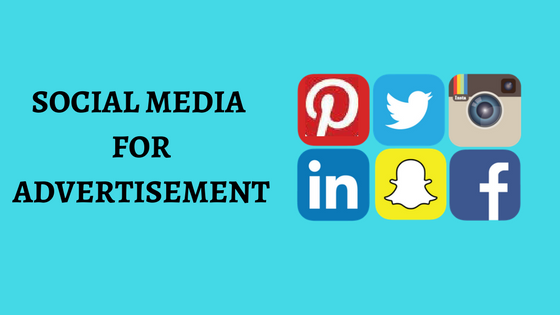
Recap of Key Points
- Increased Brand Awareness: Social media ads boost visibility and recognition through broad reach, advanced targeting, and consistent presence.
- Targeted Advertising: Precise audience targeting ensures ads reach the most relevant users, increasing engagement and conversion rates.
- Cost-Effective Marketing: Social media ads are more affordable than traditional methods, offering a high ROI and flexible budgeting.
- Improved Customer Engagement: Direct interaction and personalized content foster better relationships with customers.
- Higher Conversion Rates: Effective targeting, retargeting capabilities, and compelling CTAs drive sales and conversions.
- Better ROI: Real-time analytics, flexible budgeting, and measurable outcomes ensure higher returns on ad spend.
- Enhanced Customer Insights: Detailed data on customer behavior and preferences help refine marketing strategies.
- Competitive Advantage: Greater visibility, precise targeting, and adaptability provide a significant edge over competitors.
- Access to a Wider Audience: Social media ads reach a global and diverse audience, tapping into new markets.
- Flexibility in Campaigns: Real-time adjustments and optimization ensure continuous improvement and effective resource use.
Next Steps for Implementing Social Media Ads
To start leveraging the benefits of social media ads, businesses can follow these actionable steps:
- Define Goals: Clearly outline what you aim to achieve with your social media ads, such as increasing brand awareness, driving website traffic, or boosting sales.
- Identify Target Audience: Use the advanced targeting options available on social media platforms to define your ideal customer segments based on demographics, interests, and behaviors.
- Create Compelling Content: Develop engaging and visually appealing ad content that resonates with your target audience. Use strong CTAs to guide users towards the desired action.
- Set a Budget: Determine a budget for your ad campaigns, starting with a small investment to test different strategies and gradually increasing it based on performance.
- Run A/B Tests: Conduct A/B testing to identify the most effective ad elements, such as headlines, images, and CTAs, and optimize your campaigns accordingly.
- Monitor and Optimize: Regularly track the performance of your ads using real-time analytics. Make necessary adjustments to targeting, ad content, and budget to maximize results.
- Engage with Audience: Respond to comments and feedback on your ads promptly to foster better customer relationships and gather valuable insights.
- Learn and Adapt: Stay updated with the latest trends and best practices in social media advertising. Continuously refine your strategies based on data-driven insights and customer feedback.


